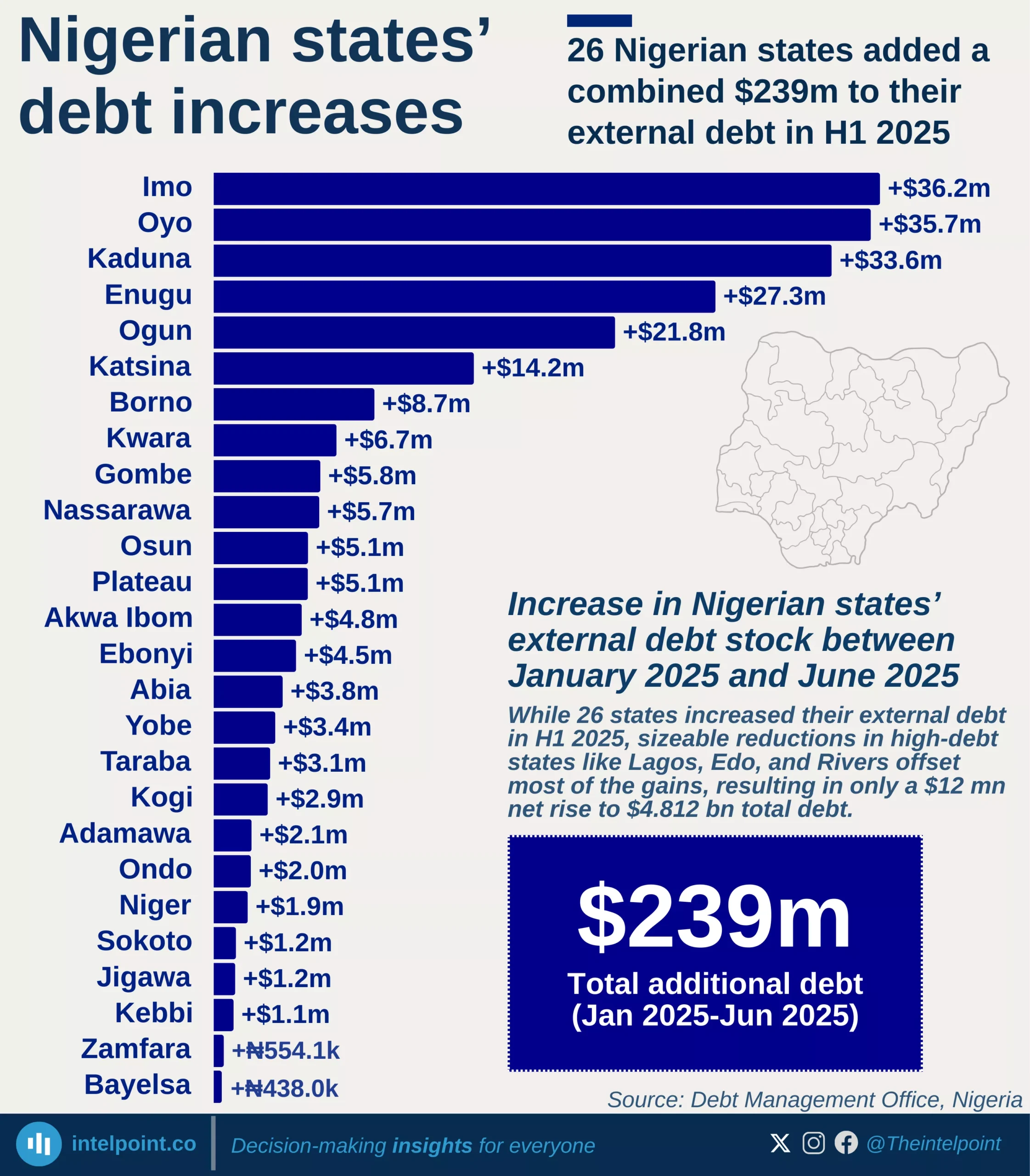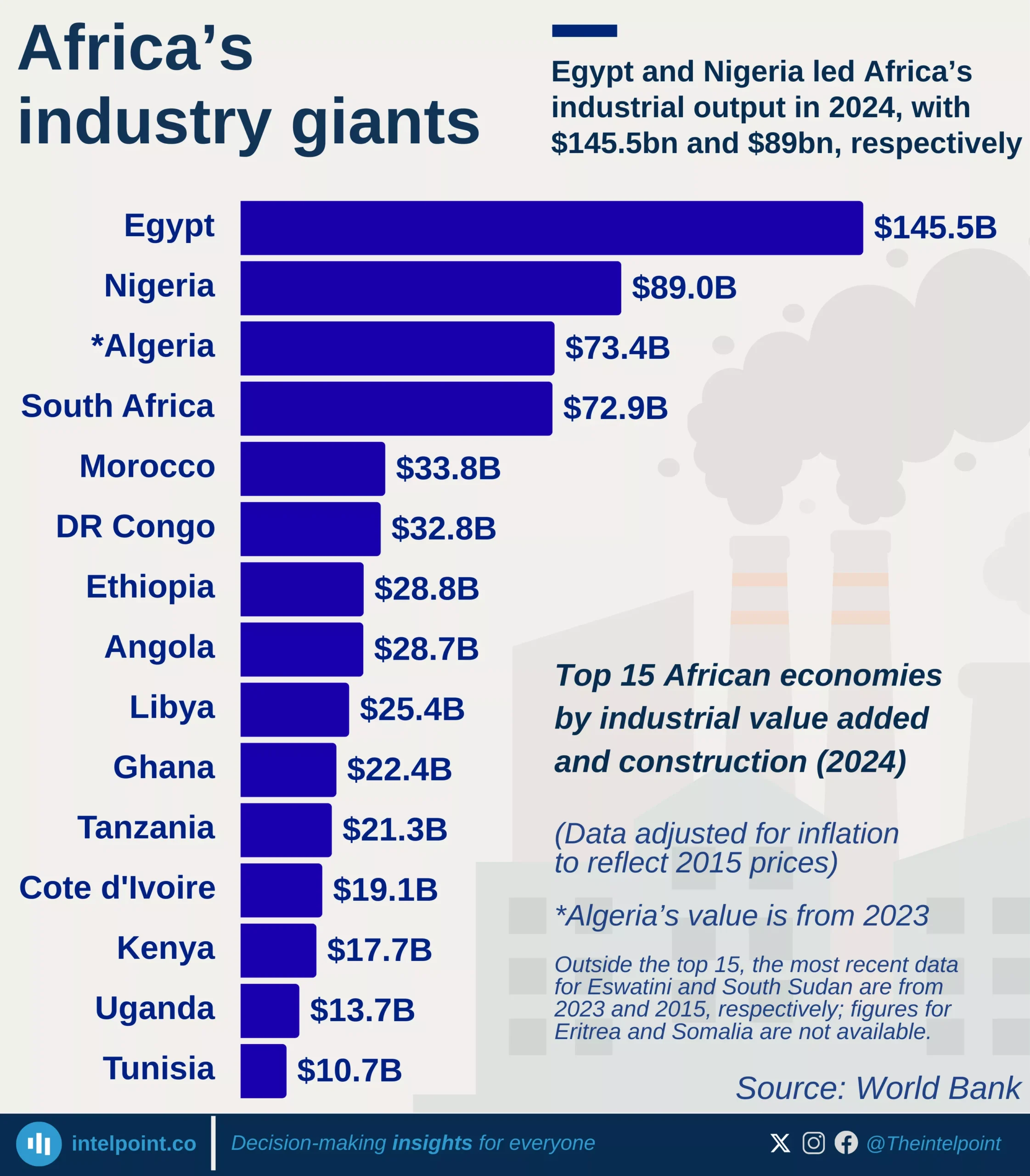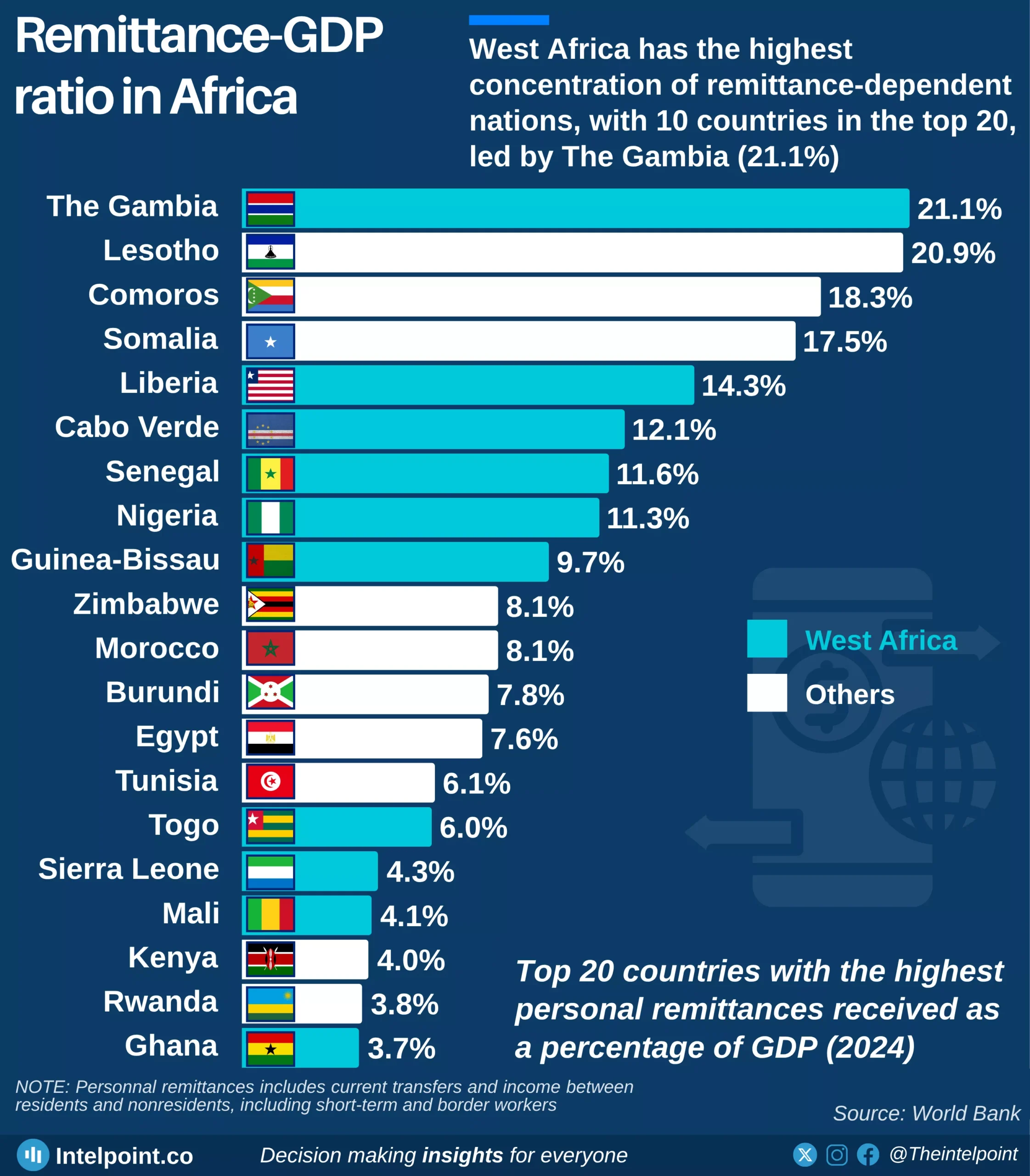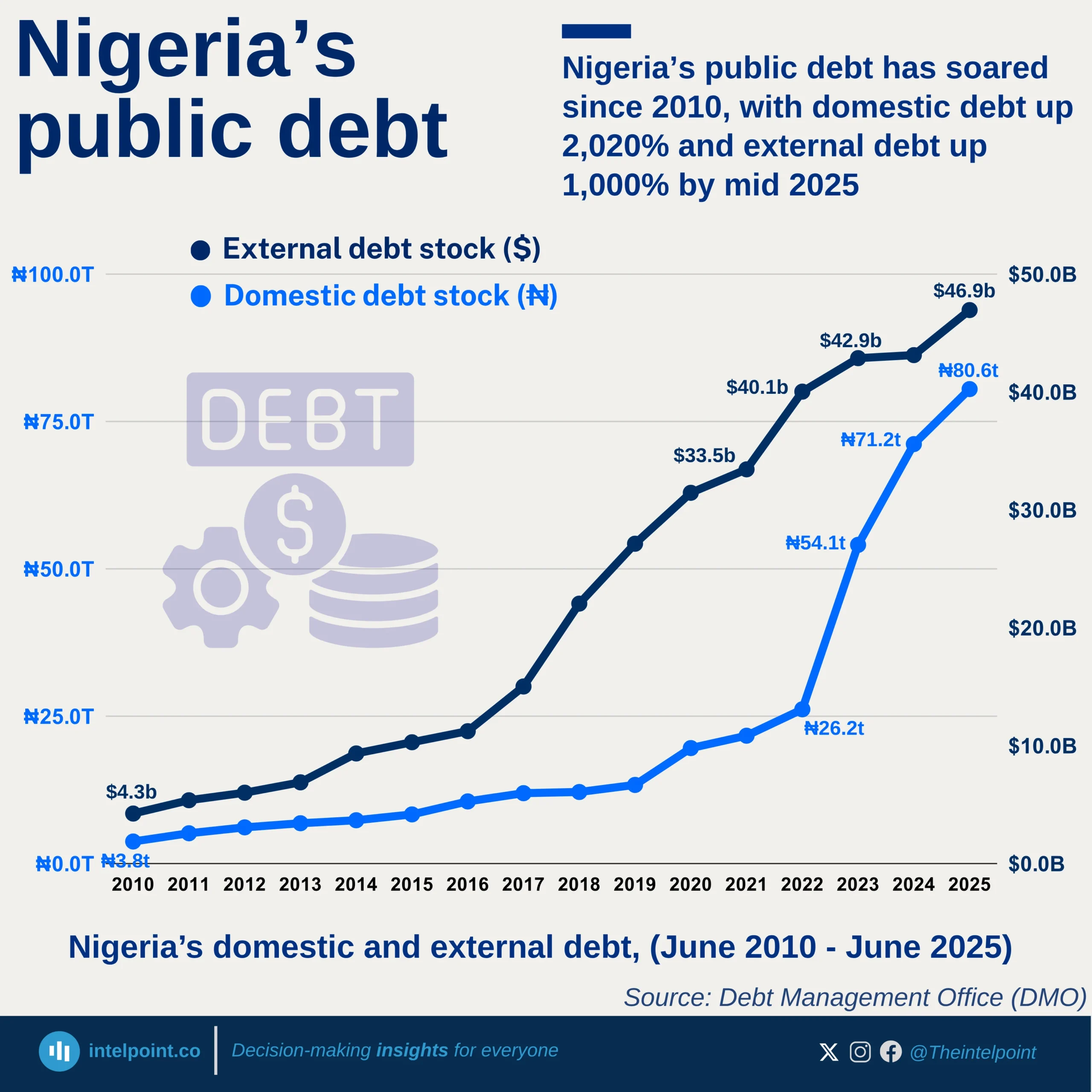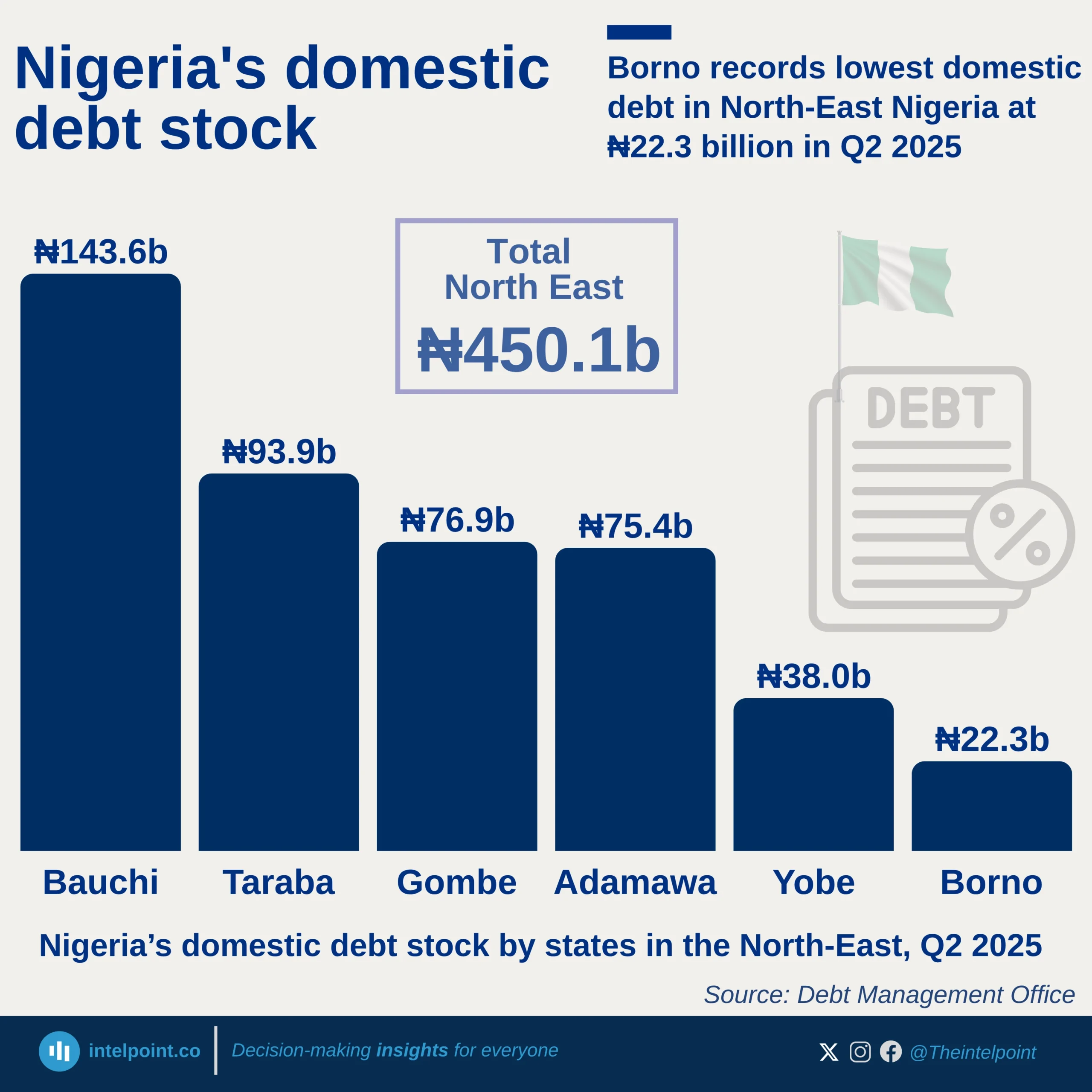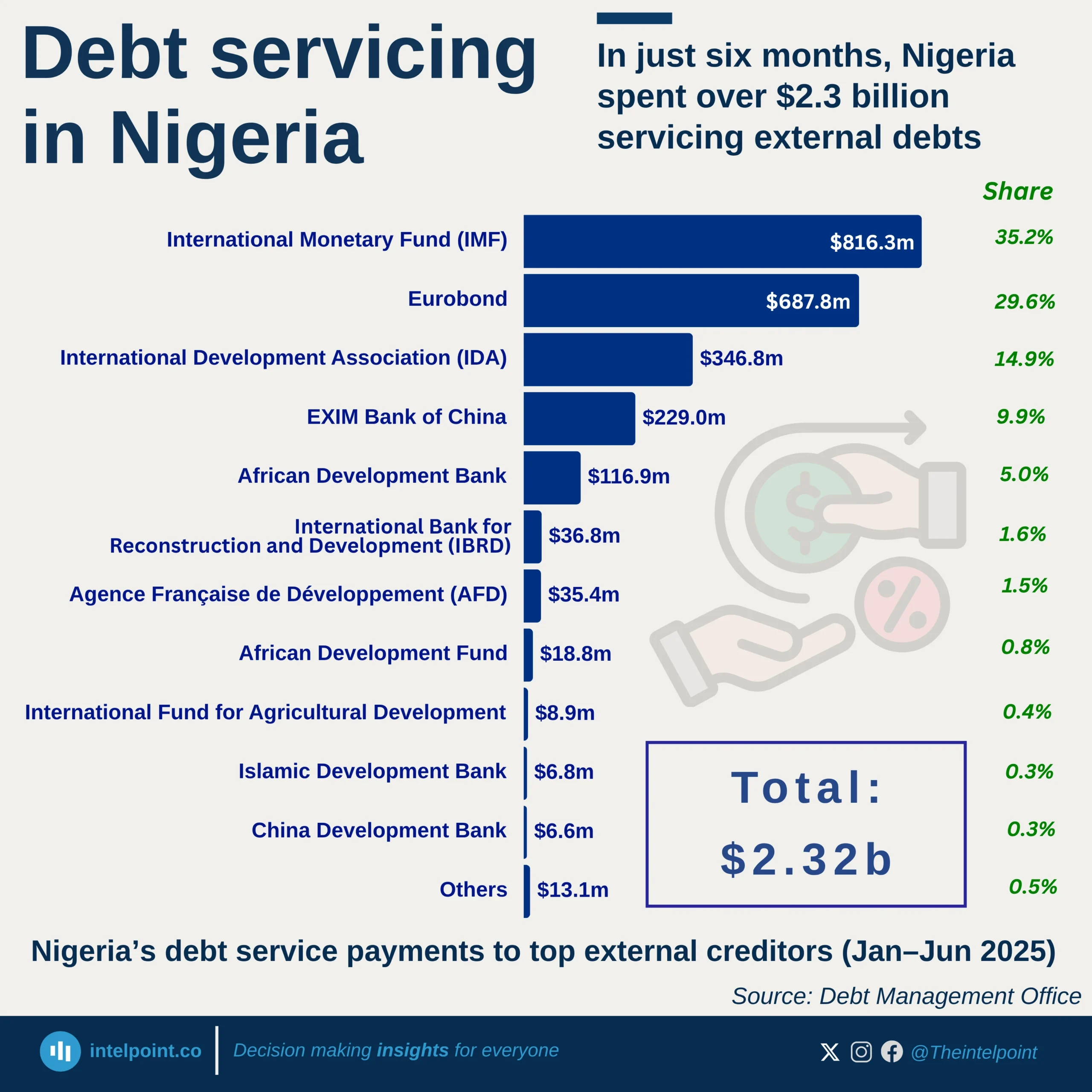Nigeria’s debt service per GDP has risen sharply over the past decade and a half, climbing from 0.9% in 2009 to a projected 15.1% in 2025, after hitting a peak of 10.2% in 2024. The data reveals an average growth rate (CAGR) of 17.8% between 2009 and 2025, underscoring a significant increase in the country’s debt burden.
A closer look shows that the fastest growth occurred during President Muhammadu Buhari’s tenure (2015–2023), when debt service per GDP grew at an extraordinary 29.1% CAGR. Debt service per GDP growth was slower under President Goodluck Jonathan [(6.5% CAGR), and] there has been a noticeable uptrend in the first two years of President Bola Ahmed Tinubu (27.6% CAGR so far).
The overall trend points to mounting fiscal pressure. The sharp jumps in recent years, especially from 7.3% in 2023 to 15.1% in 2025, highlight how quickly debt service obligations are consuming a larger share of Nigeria’s economy.
